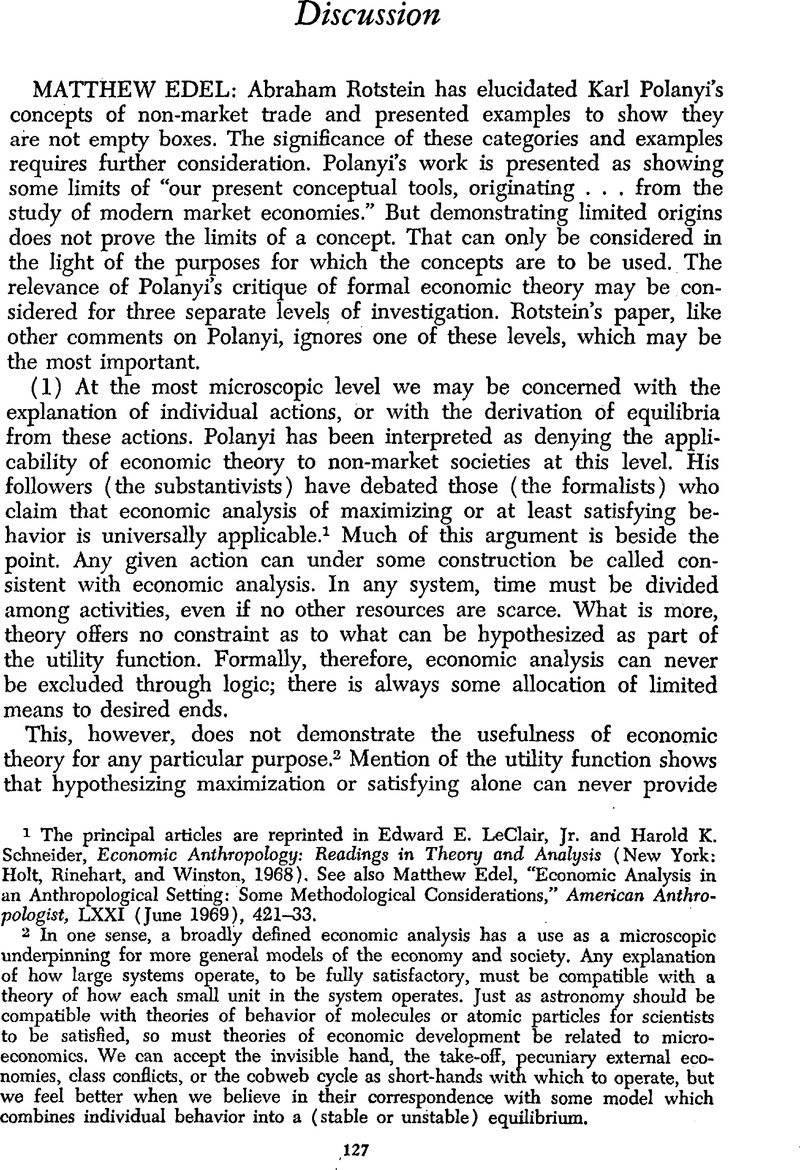
1 The principal articles are reprinted in LeClair, Edward E. Jr and Schneider, Harold K., Economic Anthropology: Readings in Theory and Analysis (New York: Holt, Rinehart, and Winston, 1968)Google Scholar. See also Edel, Matthew, “Economic Analysis in an Anthropological Setting: Some Methodological Considerations,” American Anthropologist, LXXI (June 1969), 421–33CrossRefGoogle Scholar.
2 In one sense, a broadly defined economic analysis has a use as a microscopic underpinning for more general models of the economy and society. Any explanation of how large systems operate, to be fully satisfactory, must be compatible with a theory of how each small unit in the system operates. Just as astronomy should be compatible with theories of behavior of molecules or atomic particles for scientists to be satisfied, so must theories of economic development be related to microeconomics. We can accept the invisible hand, the take-off, pecuniary external economies, class conflicts, or the cobweb cycle as short-hands with which to operate, but we feel better when we believe in their correspondence with some model which combines individual behavior into a (stable or unstable) equilibrium.
3 Triffin, Robert, Monopolistic Competition and General Equilibrium Theory (Cambridge: Harvard University Press, 1940)Google Scholar.
4 Polanyi, Karl, The Great Transformation (New York: Rinehart, 1944)Google Scholar.